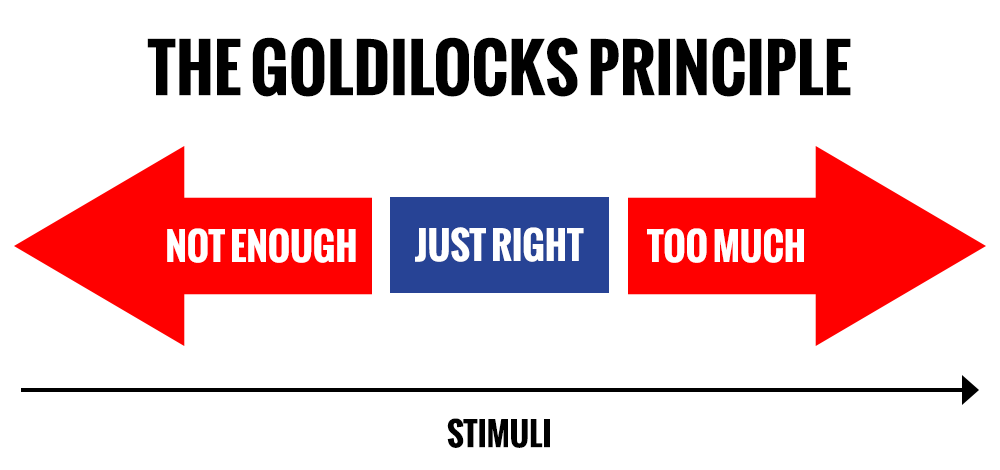W
hen I was 5 I was quite the menace around the house, getting myself into all sorts of trouble. My personal playground was the kitchen. Playing with the pots and pans, exploring the cabinets, putting my head in the fridge… you get the idea.
One day, I was on a typical adventure when I had the urge to check out what was happening on the stove. At this point, I had no idea what the stove was, so throwing caution to the wind, I began my ascent, climbing on the drawer that was below the stove top. A moment earlier my mom had been boiling some tea there, so it was still quite hot. I bet you can guess what happens next.
Being the curious child I was and with no preconceived notion of what a stove was, I promptly placed my right hand on top of one of the burners, thoroughly burning my hand and immediately understanding that stove = HOT. It was a traumatic experience, probably even more so for my parents, as I hardly remember it any longer and fortunately there was no long term damage. More importantly, that was the day that I learned about the stove and to NEVER EVER touch it directly.
That last part is what’s most interesting to me. It’s a simple idea, but quite astounding when you think about it. I learned something through experiencing it. To extrapolate that, everything that we are, do, and know is a result of our curiosity. We learn through our experiences and that learning is driven by our curious nature.
Surprisingly, curiosity still remains a mystery to us when it comes to understanding it scientifically. There is still debate on where it comes from, how it affects us, what triggers it exactly, and if it can be developed or lost. The fact that the major factor behind many of humanities greatest accomplishments remains shrouded in mystery is amazing. A trait that has guided us to the heights of space and the depths of the ocean, remains largely ambiguous.
Even so, there are some facts we can hang our hat on…
1. We All Have It
Everyone has some level of curiosity in any number of things. Do we know if it can be trained up like any other skill or if we lose it when we get older or if we can get it back later in life? Not for certain, but we all have it and that’s good enough.
2. Its Enemy Is Fear
Curiosity often leads you to the unknown, to places outside your comfort zone. As such, it makes sense that fear, risk, anxiety and failure can prevent one from being curious. If there is truth to the fact that you get less curious as you get older, it is probably due to your increased awareness of the risk.
You have to conquer your fears to get more out of your curiosity.
3. It Makes You Happy
A number of studies have confirmed the correlation between curious behavior and the release of dopamine, a chemical that induces pleasure in the brain. This same process occurs when people are seeking intrinsic rewards – like getting money or candy.
Why? Who knows, but it makes you happy and we all need to do more things that make us happy.
4. It Improves Your Memory
Finally, curiosity has been shown to improve your memory. A study showed increased activity in the hippocampus (region of the brain involved with creation of memories) when an individual’s curiosity was piqued. This is further supported by the presence of dopamine, which has shown to play a role in enhancing the connections between cells in the brain that are involved in learning.
O
utside of this, there seems to be little concrete evidence that fully explains curiosity, BUT there are a ton of theories about what triggers it. Below you’ll find a rundown of the most popular theories on what might be putting you in a curious state.
State & Trait Curiosity
The first theory is referred to as State Curiosity. State curiosity essentially says that all curiosity is driven by outside stimuli. In short, when we encounter a situation that we do not understand or have a need to understand, it triggers our curiosity, and we seek comprehension.
For example, just think of how often you Google something because you need an answer or when you learn about something because it’s required for your job. Not knowing causes an imbalance and natural discomfort in an individual, which is corrected when that unknown is no longer. Equilibrium is established.
This makes sense, but it clearly ignores situations in which we seek out knowledge, without external stimuli. For these situations we have Trait Curiosity. Trait curiosity is characterized by actively seeking knowledge or learning for the sake of learning. As the name implies, the individual has the curiosity trait. There is no external stimuli present, rather we seek out stimuli ourselves because we want to be curious and learn. This happens when we’re bored or simply have the urge to learn.
Arousal & Knowledge Gaps
While State & Trait Theory were focused on whether curiosity stems internally vs. externally, arousal and knowledge gap theory look at how effective a stimuli is.
Arousal is essentially the level of stimuli that we are engaging with when we’re curious. If there is high arousal or over stimulation, then we typically tend to avoid the subject matter. This would translate in something being overly complex or difficult to understand. Similarly, if the stimuli is minimal, we get bored and move on to something else that may spark our interest. Arousal pretty much follows the Goldilocks Principle, where you need to find the sweet spot, but not be on the extreme ends of the spectrum.

In a similar vein, Knowledge Gap theory also has an impact on if we pursue our curiosity or not. When an individual encounters a novel or unknown stimuli, there is often a discrepancy between what we know about it and what we don’t. This is known as the knowledge gap. The size of this gap plays a role in if we pursue learning. The smaller the gap, the more likely we are to fill it, as it closes an obvious hole in our understanding. On the other hand, if it is something that is largely unknown in relation to our current knowledge, then we have less desire to understand it further.

If you think about it like a game of Tetris, it all makes sense. On the left you have a clear gap in knowledge and filling it will be epic. You want to learn it far more than in the situation on the right, which is pretty much a sh*t show.
Curiosity As A Feeling Of…
A more recent theory looks at the situation that your curiosity is being engaged under.It can either be Curiosity as a Feeling of Interest (CFI) or Curiosity as a Feeling of Deprivation (CFD).
CFI is characterized by positive feelings and is often found in situations where curiosity is used to gain pleasure or just for fun. There is no real pressure in this situation. For example, CFI occurs when you think it might be nice to know how to code a website or learn to draw. It is something you would like to have, but may not really need.
On the other hand, CFD corresponds with more intense experiences, where curiosity occurs in a need-like state, so motivation is much higher to achieve understanding. Curiosity as a Feeling of Deprivation occurs when you are trying to solve a problem, resolve tension, or overcome uncertainty. For example, CFD occurs when you have a task for work that has a hard deadline and you need to learn something to complete it. In this case, your curiosity is focused on something you need and if you like it too, then you’re at the peak level of curiosity.
Putting It All Together
That was a lot of theories, but I think it’s interesting to see how all the different pieces come together. If you combine the theories and their core principles you come up with these 4 essential guidelines for engaging your curiosity.
1. All curiosity is engaged by either internal drive or external stimuli.
2. The amount of stimuli determines if we pursue our curiosity or not (too much vs. too little).
3. If we can complete our knowledge about something then curiosity intensifies.
4. The situation plays a large role in the intensity of our curiosity (like vs. need) – ideally find things you both like and need.
So in the future when you’re having trouble learning something new, take a step back and see if you’ve got the right conditions to fully engage your curiosity.
Until next time, stay curious.

